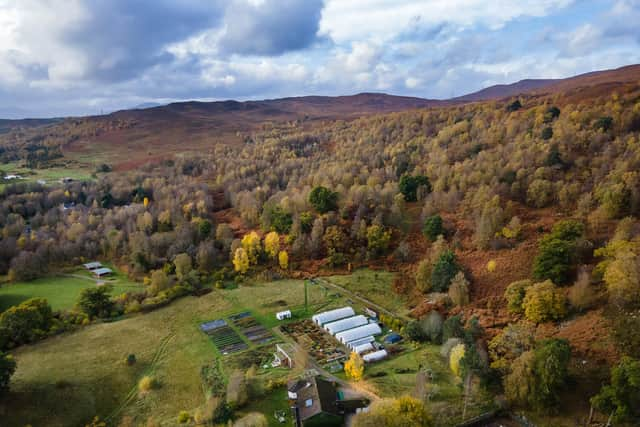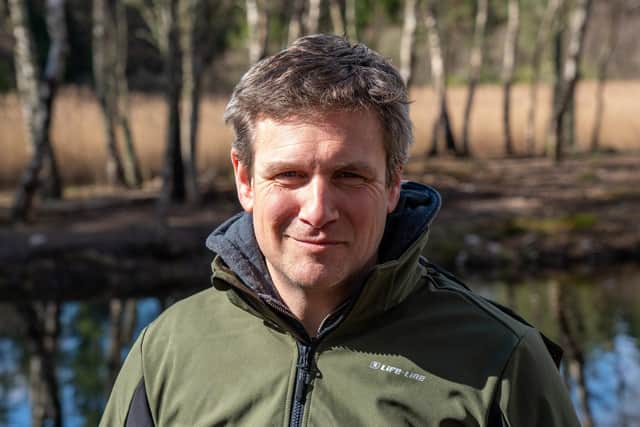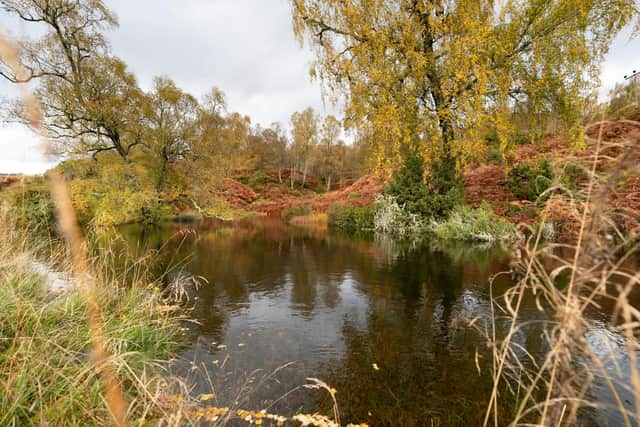The tiny Scottish Highland community getting hard cash for carbon
A Highland village is set to receive tens of thousands of pounds for carbon pulled from the atmosphere following a breakthrough approach to sharing the financial benefits of tackling climate change with ordinary people.
Glenmoriston, which sits close to the south-west of Loch Ness, has directly benefited from the sale of carbon credits generated at neighbouring Trees for Life rewilding estate at Dundreggan, with hopes the model will be replicated by other landowners.
Advertisement
Hide AdAdvertisement
Hide Ad

Carbon credits are awarded for every tonne of carbon dioxide removed from the atmosphere through natural capital schemes – such as tree planting or peatland restoration. These credits can be used to offset the landowner’s own carbon emissions or sold on a voluntary market to other companies and organisations wishing to do the same.
Trees for Life sold some carbon credits generated at its Allt Ruadh woodland and gave a third of the money to two community groups at Glenmoriston. These groups have received a first payment of £23,000 with around £50,000 expected to be generated in time, although this figure could rise or fall in time given the shifting values of carbon credits.
So far, the money has been spent at Glenmoriston on a new playpark, Christmas lights and ‘slow down’ signs to protect red squirrels, otters and frogs on the road.
The approach at Dundreggan tackles fundamental concerns that communities are frozen out of opportunities presented by natural capital schemes, with their growth in Scotland pushing up land values as a mix of private, public and corporate investors, including Aviva, Standard Life and BrewDog, seek to offset their emissions as the UK government’s net zero 2050 target looms.


The windfall at Glenmoriston also comes amid a drive to ensure the transition to net zero is a just one that benefits all parts of society.
Alan McDonnell, head of nature restoration at Trees for Life, said its approach to community benefit was now being shared with private landowners and corporate investors embarking on natural capital schemes.
He said: “There are benefits to people from restoring nature. There are opportunities there to support livelihoods and that is a message we would like others to adopt.


“You can more readily make those opportunities if you own land or control land. But we also feel that people who don’t own land are also an important part of the mix and it is much more challenging to think ‘how will they benefit?’
Advertisement
Hide AdAdvertisement
Hide Ad"I was just racking my brains on that and thought ‘why don't we just give them some money?’ We have done this, lets share some of that, let’s see what happens."
Mr McDonnell said, in legal terms, “no one owns carbon” and there was a case for local communities to have their share.
He said: “It is just that the landowners, in this case us, have the ability to enact a scheme, draw it down and realise the revenue. But in terms of ownership, if it is a pubic asset or it relates to people who live around that asset, then there is a case for them to have a stake in it.”
By creating community benefit from natural capital schemes, the value of each carbon credit can also increase as investors seek “good carbon”. In turn, more money for communities can be created.
The first carbon credits sold by Trees for Life were priced at £11.80 in 2020, with the value rising to £40 in 2022 and, most recently, £60. It is expected they could soon sell at £80 given their high “natural and social integrity”.
At present, the average value of a carbon credit is £25.
Mr McDonnell said: “We say to buyers, our carbon is expensive because it should cost you a lot to offset your emissions. Realising these nature benefits is also expensive and we also see a clear social justice case here given there is a community benefit.
“If that price is there and it is right – and that is the big if – you can get these win-wins.”
Mr McDonnell said Trees for Life assessed potential buyers to ensure any sale of carbon was not “greenwashing” away poor environmental credentials.
Advertisement
Hide AdAdvertisement
Hide AdHe said: “If people are just offsetting carbon and reducing their emissions, then climate change will get worse. We have to reduce first – that is the priority.
“When we got to £35 and £40 per unit, we would tell people that cheaper carbon was available. A greenwasher isn’t going to pay top whack.”
Dundreggan hosted a workshop in October last year attended by a number of private investors in natural capital.
"We brought them here to say there should be a social benefit in all this,” Mr McDonnell said. “We were surprised when they said ‘yeah, how do we do it?’
“They were definitely open to it as a concept, but whether they think a third of the unit cost should end up in the hands of a community, well that is untested.”
Mr McDonnell said discussions were ongoing with private estate owners on the development of their own natural capital schemes.
He said: “The landowners that we talk to, private estates who sometimes are quite conventional, are interested in what it looks like. They know we are selling above the market rate and they are interested in how we have done that. We say it has to involve this high social integrity approach.
"It takes a long time to develop, but hopefully we are getting close to that now and there will be carbon-based units from a private estate that people will be willing to pay that higher price for.
“That will be a moment which we can celebrate – a private estate stepping up to that bar. That is a much bigger statement than Trees for Life doing it.”
Comments
Want to join the conversation? Please or to comment on this article.